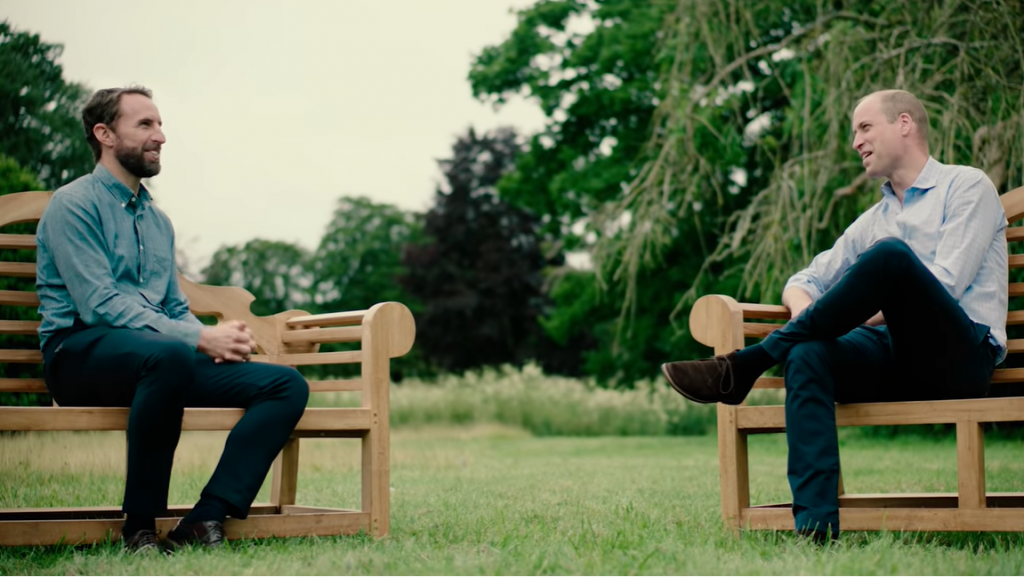Mental health campaigns for young people
Addressing Post Pandemic Stress Disorder
About the author
Claire Mutimer prepared this article as part of a CIPR Professional PR Diploma assignment while studying with PR Academy.

Already mental health services have seen an enormous spike in demand during the pandemic and this is expected to continue post Covid-19. After a year of the most extreme public health messages and changes in our behaviour we need to re-evaluate what will work to reduce stigma and encourage young people to access mental health services, writes Claire Mutimer.

Studies of man-made and natural disasters show that psychological damage occurs long after the initial impact. Owen O’Kane former mental health lead for the NHS in west London believes that the Covid-19 pandemic risks leaving similar long-term distress in its wake. Owen describes the phenomenon as: “Post pandemic stress disorder.”
Two groups within the population have been identified as particularly at risk of this stress disorder: young people below the age of 25 and people who have an existing mental health illness. The ever-changing evolution of the pandemic and the continual messaging around it make communications feel out of date very quickly – trends feel more intense and visceral than ever before.
In this article I look at how the pandemic has changed the way young people use and respond to media. I examine the pros and cons of PR campaigns and discuss the tactics we may need to draw on to engage young people. I also look at how, as a result of some mental health campaign evaluations, we need to re-think who we are targeting and how the current climate may present the perfect opportunity.
Top-down messaging
In the paper ‘A research agenda for the post‐COVID‐19 world’ it highlights how the pandemic has necessitated the production of large volumes of fast and flexible public health responses, to address rapidly evolving risks.
PR professionals need to consider the likelihood of ‘message fatigue’ from a nation who has been told what to do so many times and are now tiring of that top-down communication.
Listening to young people
The speed of response to the pandemic and need to create ‘catch all’ communications for the entire nation meant a move away from evidence-based decisions on how to select messaging in the early months of the pandemic. It is now time to start listening to young people and understanding how things have changed for them, running focus groups with our stakeholders to comprehend what the issues are.
Sometimes the most surprising outcomes can come from listening.
An iconic example of a health campaign is Truth. Hicks (2001) wrote an article explaining some of the decisions made in the anti-smoking campaign, he related that they designed the campaign by listening to young people, including through focus groups. The main breakthrough concerned the realisation that young people smoked to feel “in control.” The designers therefore reasoned that making young people rebel against manipulation from the tobacco industry could be a successful approach.
Based on evidence of behaviour from the pandemic – young people are keen to ‘take action’ and are passionate for a cause. News stories have taken off on Twitter and spilt onto the streets – it is Gen Z who were some of the main drivers behind #Blacklivesmatter and the violence against women vigils following the murder of Sarah Everard.
There has also been a rise of authentic influencers too, who haven’t been ‘put up’ to promote a brand – instead they are taking on an issue close to their heart. Marcus Rashford did this with lets #endchildfoodpoverty and Jo Whiley raised the issue of prioritising vaccinating people with learning disabilities after her sister became ill with Covid-19. There is energy to garner in the right direction for a cause related to mental health.
Don’t Do It Alone
Online mental health support provider Kooth, whose target market is 11-25 year olds, launched an advertising campaign in Jan 2021 ‘Don’t Do It Alone’.
Their response to the pandemic was to get social influencers including Chunkz and Amelia Dimoldenberg, to talk about amusing things they would only ever do alone – which included admissions like ‘body-popping to Celine Dion’. The film ended with the message that no matter what kind of problem you are struggling with, there is always someone alongside you to talk to when it comes to mental health.
Because the pandemic has forced people to be inactive, instilling a general goal for action may be beneficial. However as suggested by Albarracin’s Action goal theory it is also important to set specific goals, something that the wider material of the #Don’tDoItAlone campaign does well including lots of suggestions like getting young people to practice asking for help or making a positive word board.
This simple film from Kooth using social influencers and humour made it feel like you were hanging out with friends. With Twitter’s analytics firm, finding that consumers have nearly the same level of trust in digital influencers as they do in their real-life friends, this kind of campaign represents an effective way of reaching young people.
The power of persuasion
The message of ‘talk to someone’ has been repeated in a myriad of ways over many years in mental health campaigns and there are some great tactics employed in recent campaigns to present this in a fresh way. This includes Cialdini’s persuasion secrets ‘authority’ in the case of Heads Together, a mental health initiative spearheaded by The Duke and Duchess of Cambridge which focuses on helping athletes talk about their mental health struggles.
Another of Cialdini’s approaches is ‘liking’. The masters of narrative Aardmann and UK mental health made a series of films with young people in 2020 who conveyed their relatable lived-experience. They held workshops with young people, discovering what issues were relevant. Certain topics: perfectionism, independence, loneliness, competition and social media came up time and again. So, these became their themes with sentiments that many young people would instantly nod and recognise the feelings that they describe.
A group who are particularly vulnerable to ‘post pandemic stress disorder’ are those suffering from a serious mental illness. For those in this position some campaigns can come across as mental health ‘lite’ – to coin Hannah Zeilig’s term – a situation that has become more exaggerated over the last year as everyone has laid claim to mental health.
A campaign that successfully stretched across the spectrum of mental illness and highlighted the very important issue of suicide, particularly in younger men, was Find Mike. It was an opportune campaign that brought together a man who was thinking of jumping off Waterloo Bridge and the man who talked him down. It succeeded due to its compelling story telling and unfolding drama. Equally it shared hope, recovery and intervention – all important messages.
The method is the message
How something is said is as important as what is said. The method of communication becomes part of the message, so needs to be appropriate for the content.
Messaging via social media is a key way to communicate to young people. Leeds NHS ran a successful social media campaign, MindMate on Snapchat where they created 10 Snapchat filters, each including a caricature of one of their MindMate ambassadors which they promoted across various online and offline channels.
However, with 18- to 24-year-olds now spending on average a record-breaking 5 hours plus a day online according to Online Nation 2020 – message fatigue will be a factor. Data shows that during the pandemic, young people have been splitting their time between gaming, getting creative with Instagram Reels, Snapchat and TikTok (Tiktok doubled its downloads from 2019 Q1 to 2020 Q1) and serious news Ofcom report 2020.
A persuasive campaign will depend on many factors and should consider how the audience interprets the information. Campaigns on Instagram Reels or Twitter may appeal to different ‘routes’ in the brain depending how motivated and how able the recipient is at interpreting the message. When someone is motivated and able the message can lead to long term attitude change. When they aren’t, recipients will be relying more on what the music is and how appealing the presenter, so it is important the message is clear, and the peripheral cues are strong.
Appealing to all?
The impact and evaluation of mental health campaigns is less well documented – one American article highlighted that BAME young people reported lower levels of change compared to white youth. Social media campaigns are useful in addressing mental health stigma and help seeking, but messaging needs to attend to the cultural characteristics of all young people.
The campaign Time to Change has reviewed their work extensively over the period from 2009 to 2019 and have seen knowledge and attitudes improve. Conversely, since 2017 the campaign has targeted groups with less positive attitudes towards mental health e.g. men and lower socio-economic groups, and so far, has seen no improvement.
They identify that changes in media used and/or campaign content may be needed to achieve greater awareness and effects in the target group. So, are we targeting the wrong people?
One of the major aims behind not just the Kooth campaign but many others is the reduction of mental health stigma. Stigma is a fundamental cause of the health inequalities faced by those with mental illness, it affects the ability to come forward and seek help, the availability of resources, social isolation and stress. Understanding who owns stigma is so important for those who are trying to counteract it.
This paper uses psychographics segmenting cognitive characteristics, it turns the whole process as to who we should be directing our campaigns at and how, on its head. The research looks specifically at those who stigmatise (‘stigmatisers’) and argues that most social marketing campaigns are targeting the wrong people.
The general process has been to gather mental health sufferers and ask for their input and they have tended to direct the campaigns back at themselves or their friends to encourage breaking down stigma and reaching out for support. This leaves the stigmatisers completely untouched.
The study argues that stigmatisers have a variety of reasons that cause them to have negative stereotypes of mental health sufferers and by a series of questions and mathematical algorithms have worked out a group of five types of stigmatisers; allies, adversaries, blamers, shamers and ambivalents.
They then targeted messaging by deciding which group would yield the most social change from social marketing spend. For example, they found that the ambivalent group believe that people with mental health issues are incompetent and ‘different’. So, a marketing strategy would need to counter these stereotypes – it might be by highlighting successful celebrities and historical figures to emphasise competence – like the work Stephen Fry has done about his bipolar disorder.
Collective opportunity
Most people have felt some level of hardship or loneliness in the past year including those who might have previously stigmatised mental health sufferers.
One aim of PR campaigns should be to shift people’s focus from the impact of the pandemic on them personally, onto similar impacts on other people, resulting in a heightened concern for mental health sufferers.
The rationale is that people are more sympathetic toward others when they share similar experiences and that this can be the starting point to focus on those ‘stigmatisers’ because they might now be more susceptible to change.
This article shows that there is an imperative to have a joined approach including working across agencies, creating forums for conversation, careful listening and use of analytics to assist in the planning and measuring success of campaigns. By doing so, campaigns will be successful in targeting the right people to help destigmatise talking about mental health and encourage young people to access vital support services in order to help mitigate Post Pandemic Stress Disorder that will disproportionally affect young people.